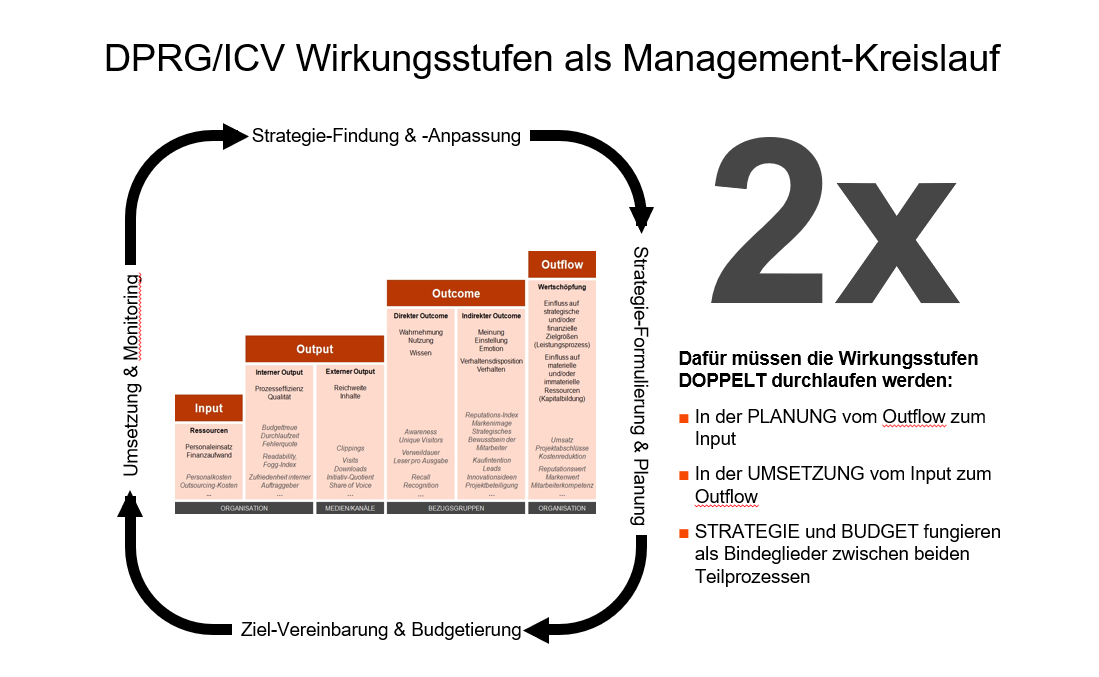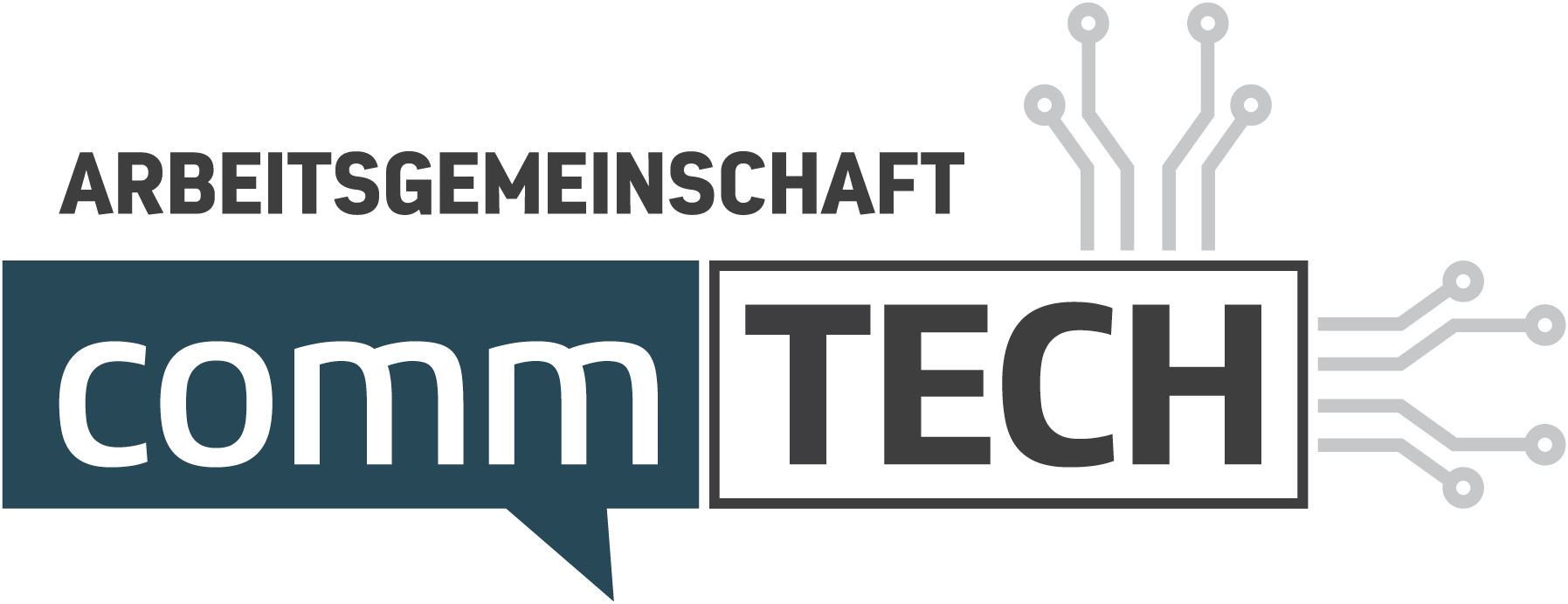- 6. May 2024
- Posted by: Die Redaktion
- Category: NEWS

Dr. Reimer Stobbe: Measuring the success of corporate communications

Proving the success and impact of corporate communications is a challenge that requires expertise. The prerequisite is timely planning with targets and measuring where it makes sense – with suitable metrics. In the digital world, this involves integrating, organizing and making a great deal of data usable.
All of this requires a sustainable and methodically consistent approach. The DPRG/ICV impact level model serves as a common standard for this. It answers the question of success step by step. For the management of communication, it combines planning, implementation and measurement in a complete, iterative management cycle. To achieve this, the steps in planning must first be taken from top to bottom – and then from bottom to top again in measurement and control. This applies to the communication of an organization as a whole as well as to a communication campaign or measure.
Performance measurement and impact measurement are part of communication controlling. Written with a hyphen, the term indicates that there is a connection between the communication discipline and the methods of business management (controlling).
Digitalization means that more and more can be measured better and better. The systematic handling of the large amount of data is just as important as the method by which measurements contribute to the control of communication within an organization. The DPRG/ICV impact level model has been available as a methodological basis since 2009 (figure). Internationally, the Barcelona Principles of AMEC must also be observed.

At the beginning there is the question of the object of the proof of success – the level. Is it about
- A single communication measure?
- A communication channel as a whole?
- A stakeholder journey across multiple channels?
- A sub-discipline – e.g. internal communication?
- The entire Corporate Communications department?
- The communication of the company as a whole?
The effect levels can be applied in any case. First of all, the planning goes from top to bottom.
- What is the overarching goal of the communication?
- Which target groups are relevant for achieving the goal?
- What kind of behavior should be achieved among the target groups?
- What attitude towards our offer / our company is required for this?
- What information should be conveyed to the target groups?
- How do they become aware of our information or contact offer?
- How and where do we optimally reach the target groups(reach)?
- What must our offering look like for this, our communication channels and products in combination?
- How can we efficiently produce these communication tools with high quality?
- What resources (people and investments) are needed for this?
Once all of this is transparent and clarified, we can measure the impact levels from bottom to top , continuously optimize communication and ultimately demonstrate success. There is good news for all communicators who find themselves under pressure to justify their actions: The question of the success of communication can be answered in stages:
- I have used my input, the resources, efficiently and have high demand in the company(internal output)
- I reach the defined target group – reach(external output)
- The area of output is still home to many of the communicators’ success stories. The media response analysis also measures the contact offered to the actual target groups/stakeholders and is assigned to external output. The fact that communicators often (and often unthinkingly) limit themselves to this level is due to the fact that we are still within the organization or channels. Firstly, it is easy to measure without much effort and secondly, the influence of communication is easy to prove. Both change more and more in the “upwards” area of the effect. For example, “print products in kg” has already been used as a key figure. Internal demand and satisfaction is another way of demonstrating success in output.
- Proving the impact on the target group itself(outcome) requires a change of perspective because we are now “in the heads” of the target group, so to speak. This is usually about the planned sequence – journey – in which we want to guide the target group through the stages to the intended behavior. To what extent (key figure) does the target group deviate from this planned path? – To what extent will it be successfully completed? We can use these results to adjust our communication offering in line with the measurements.
- As already mentioned, the influence of the specific communication measure can no longer be clearly defined in the indirect outcome. This makes it all the more important to record all influencing factors, for example on the attitude of the target group. This is the only way to control this level. It is therefore essential to consider the entire organization/company at this level with regard to a stakeholder group as a whole.
- This also applies at the value creation stage(outflow). If we have carefully followed the path from top to bottom in our planning, with metrics at all levels, it will be easy for us to demonstrate a successful contribution to the target. The impact levels always build up a causal relationship, a value chain, which is measured with a corresponding KPI chain that builds on one another. There should be no shortcut: Driven by proof of “ROI”, meaningless measurements such as “advertising equivalence value” occur. A press release is part of the external output of the impact levels. How is it possible to jump from here to the outflow? And what does this prove or control? The more, the better? This is not a meaningful proof of success and makes the communicator untrustworthy vis-à-vis controlling.
Finally, back to the levels listed above. Here it must always be clear what the object of the planning and measurement is in stages. The lower levels contribute to a higher strategic level. This is the only way to measure reputation – a key strategic success factor for any company. That is a separate chapter.

About the author
Dr. Reimer Stobbe has worked in corporate communications at Munich Re since 1999 and has been responsible for impact measurement and analytics, among other things, since 2004. With a doctorate in history, he has played a key role in the development of standard methods in the field in Germany as the long-standing head of the Communications Controlling specialist group in the International Controller Association (ICV).
Contact: rstobbe@munichre.com

